|
|
Comments: This is the first of five uses of Obverse 2 and the second and final use of Reverse 1859-O B in 1860. Reverse 1859-O B is transitional, first used to strike two die marriages in 1859. This is the most common 1860-O die marriage. Much of the GSA hoard came from this die pair. |
Obverse 2 The photo below shows the Obverse 2 attribution grid. 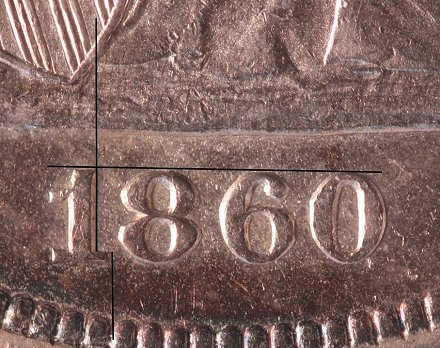 1860-O Obverse 2 attribution grid Obverse 2 exhibits minor repunching on the date, visible above the 8 and 0 and inside the upper loops of the 8 and 6. Die polish lines extend into the field from the rock above 60, almost horizontal, slanting slightly down to the left. These features are indicated by the arrows in the following expanded photo. 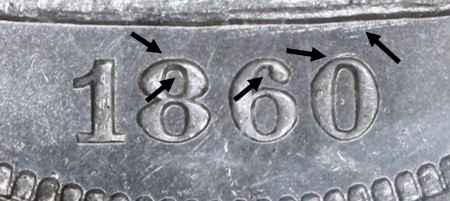 1860-O Obverse 2 repunched date and die lines All these markers are very subtle. They disappear quickly with die polishing. A high-grade coin will be required to see these features. They are visible only on early states of this die marriage. The marker that remains after die polishing is a circular mark on Miss Libertyís gown below the left breast. This is indicated by the arrow in the following photo. This die line is shallow, but visible on most coins in AU or better. It may be difficult to see if the coin is heavily bag-marked or has excessive contact marks. Itís often difficult to see in photos. We've enhanced the die line on the photo below to aid in attribution. 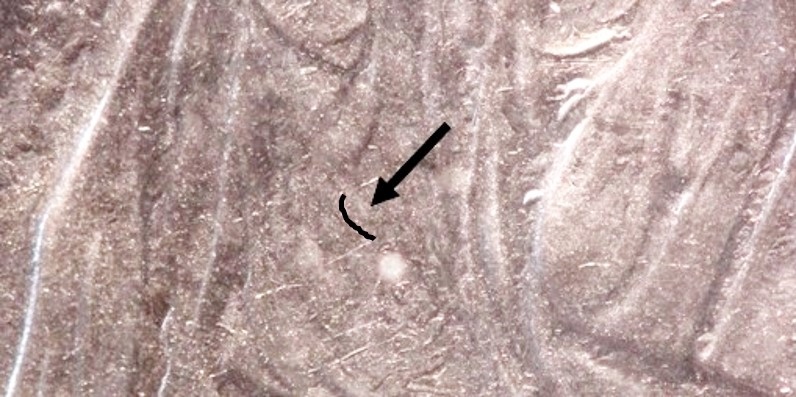 1860-O Obverse 2 circular die line For simplicity, the date position should be considered as the best feature to attribute this obverse. It's unique enough to separate it from the other 1860-O obverse dies. Early die state examples, which exhibit the repunching on the date, are scarce but not rare. They can be found with patient searching.
|
The photo below shows the mintmark position for Reverse 1859-O B. 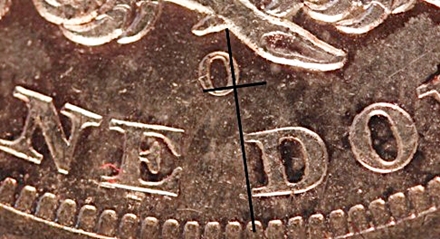 Reverse 1859-O B mintmark Reverse 1859-O B exhibits several die lumps in the upper left shield recesses, shown in the following photo. The most notable is the small dot at the top of recess #1. This is visible on most mid- to high-grade examples, but itís not a completely reliable marker. It can easily disappear if the lighting isnít just right. 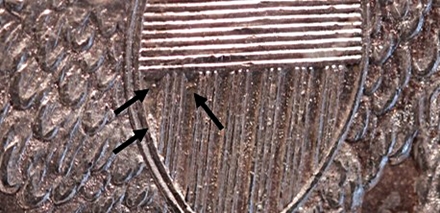 Reverse 1859-O B die markers Other markers that can help attribution are die cracks around STATES OF. A radial crack extends from the rim, passing through the right side of T2 just right of the upright. A second crack almost completely surrounds the reverse at the base of the letters. These cracks are seen on all examples of OC-2, since they occurred during the previous usage of this die. Thus they are reliable identifiers. The die cracks are shown in the following photo. 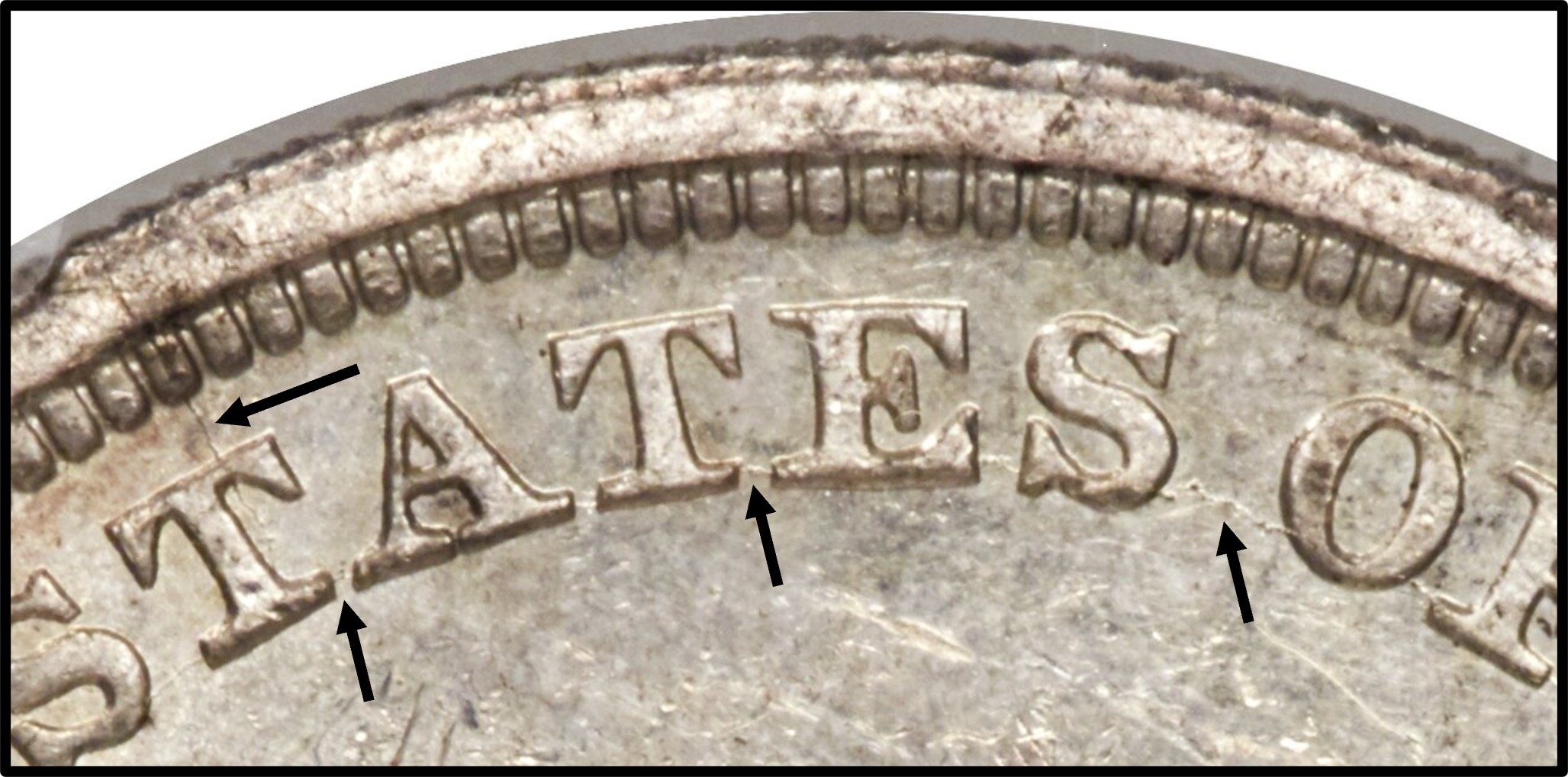 Reverse 1859-O B state c diecracks
|
| Photo credits:
Obverse 2: 1860-O NGC MS60, from the Osburn-Cushing reference collection. Obverse 2 repunching: 1860-O PCGS #21132237 MS63, from the Stephen Petty collection. Reverse 1859-O B: 1859-O NGC MS60 CAC Gold, from the Osburn-Cushing reference collection. |
